How high or low should a bed be? Experts share key considerations
We spend a lot of time sleeping, or at least trying to sleep, but do you know how high or low your bed should be?


If you are wondering how high or low should a bed be, you will be in either one of two situations. The first is you are simply in the market for a new bed, and you have realized that bed height does, in fact, come into this decision. The second is that you have unfortunately found yourself uncomfortable in your own bed, either when sleeping or accessing your sleeping space.
We do not regularly replace a bed, perhaps only when we get a new mattress or decide it is time for a bedroom upgrade. And it is not just the depth of your mattress that can impact the final height of your bed, but also the bed type and frame.
With a flurry of good-looking styles on the market – all promising a wonderful night’s sleep alongside a dreamy aesthetic – what should you consider when choosing the best bed height for good looks and even better sleep hygiene?
How high or low should a bed be?
Truth be told, when it comes to getting a great night's sleep, one bed height does not suit all. Taking a blend of physical and environmental factors into account can be a sensible approach to knowing how tall a bed should be or if you should choose a design that sits closer to the ground. Here is what to consider, according to experts:
1. Ease of accessing your sleeping space
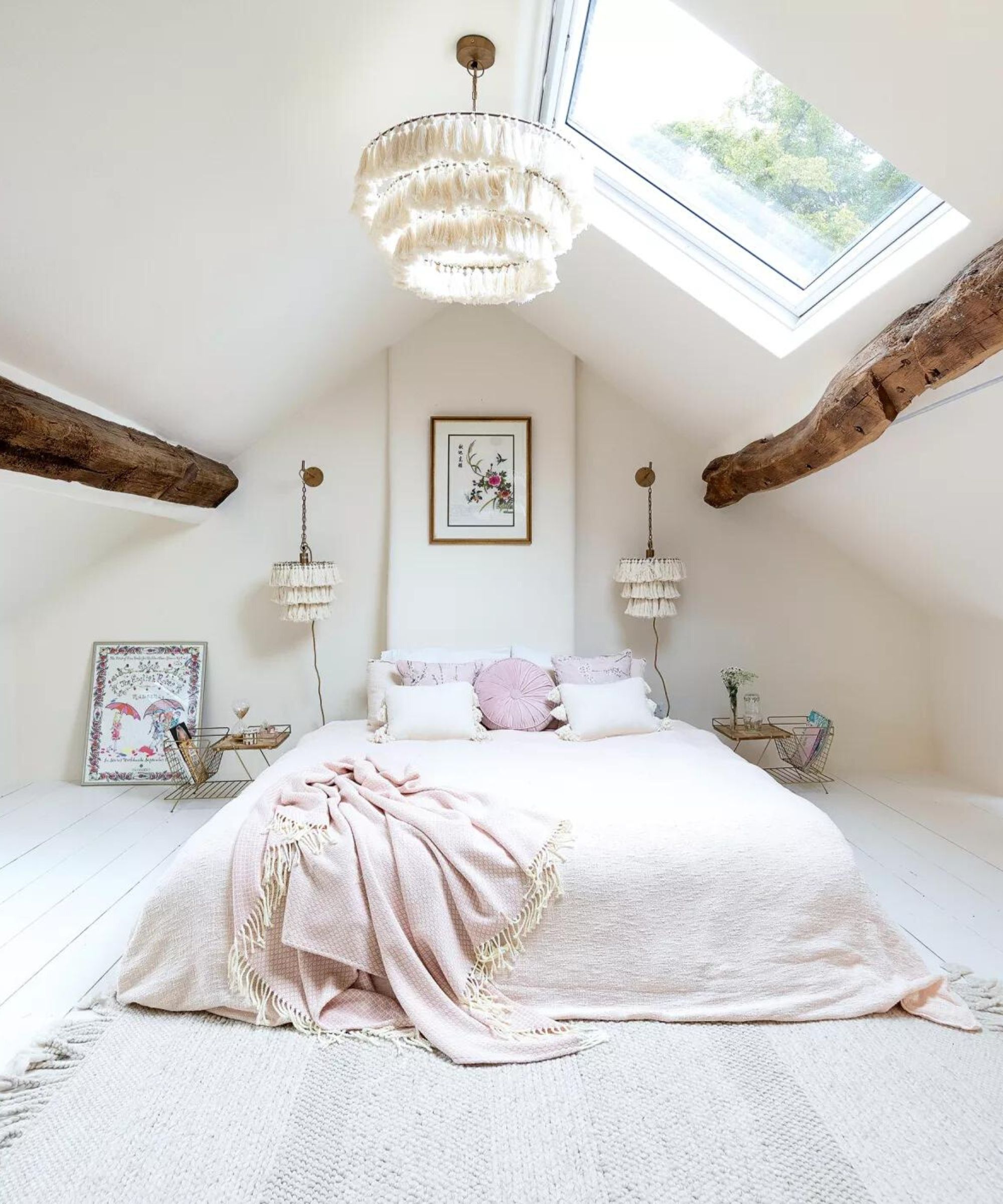
First and foremost, our bedrooms should act as sanctuaries and so it is important to consider comfort for you, and anyone else sharing the bed. Having a good mattress is one thing, but your height, leg strength, and general mobility all play a part. 'Patients with knee pain and arthritis, and older patients with weakness in their legs may benefit from having a higher bed,' says physical therapist Dr. Heather Swain.
That is not to say that those without mobility issues should automatically opt for a higher bed, as choosing a lower build could future-proof your sleeping space for good health. 'It may be advantageous to have a lower bed for able-bodied people to help maintain leg strength with regular use during daily activities like getting out of bed.'

Dr. Swain received a B.S. in Exercise Science in 2013 from Eastern Michigan University and a Doctorate in Physical Therapy from the University of Toledo in 2016. Dr. Swain currently owns a private practice in Toledo Ohio and serves as a guest lecturer for the University of Toledo DPT program. Her specialty interests include chronic pain, dysautonomia, pelvic floor therapy, and orthopedics.
A simple way to determine the most comfortable bed height is by looking at your sitting position, especially if you have trouble with access. 'Anyone with diminished ability to get in and out of bed should choose a height that is just a few inches from their natural sitting height,' says Dr. Robert Oexman, who is well-versed in the enigmatic act of good sleep. 'Is it easy for them to sit on the mattress and easy for them to get up?' Dr. Oexman suggests using a motion base that might make getting in and out of bed a little easier. Do this with the head fully elevated, he says.
'After you get in, you can lower the head. When you wake up, raise the head up and just swing your legs over the side.' Motorized and adjustable beds are available at Wayfair, and there are some good-looking options at Target too, like the Lucid.

Dr. Robert Oexman is currently the Chief Science Officer at iSense. In his career, he has managed research studies at the Stanford University Sleep Research Center, Harvard Sleep Research Center, Toronto University Sleep Research Center and Research Triangle International.
2. Sleeping patterns

Side or stomach sleeper, it is no secret that we all sleep differently. Being aware of your sleeping habits can be telling when choosing the right bed height for you. For instance, should anyone be susceptible to falling from the bed because of night traumas or a health condition, this should be addressed accordingly:
'People with seizure disorders who are at risk for falling out of bed may benefit from lower bed heights,' continues Dr. Swain. 'People with vertigo-type issues that bring on dizziness when rolling over in bed may also prefer beds lower to the ground.'
It could be that someone with a history of trauma and difficult sleeping patterns will simply feel safer and more guarded with a higher bed frame. 'Loft beds can feel safer due to being elevated.'
The chance of sleepwalking is also essential to consider, especially when creating a sound sleeping environment for children, Dr. Oexman tells us. Address this once you know your child's sleeping habits, until then, keep the child's bed close to the ground to prevent them from falling.
3. Ease of bed maintenance
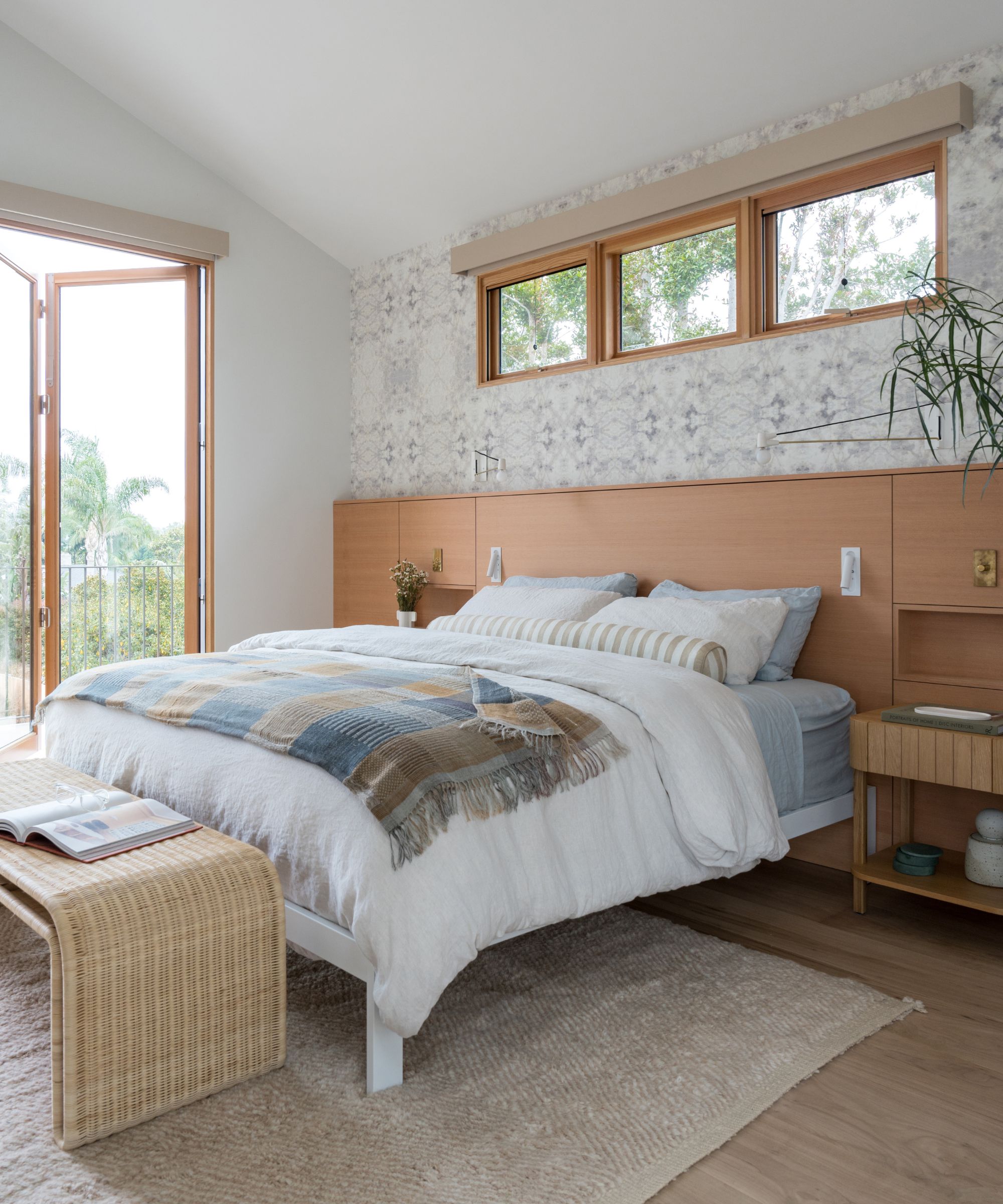
Bed maintenance goes hand in hand with access, and considering how you will feel when it is time to wash bed sheets or put the bed together in the morning is important. 'This may be easier at higher heights for people with back problems who have pain with bending over,' says Dr. Swain. On the other hand, 'It may be more challenging at higher heights for individuals with shoulder mobility problems if their range of motion is limited. Higher beds mean raising the arms higher to make the bed.'
Thinking ahead to when it is time to flip the mattress could also impact how high or low your bed should be, 'This is easier to do at higher heights, which involve less bending over.' Remember, the best mattress toppers will help make your sleeping space more manageable.
4. Allergy management
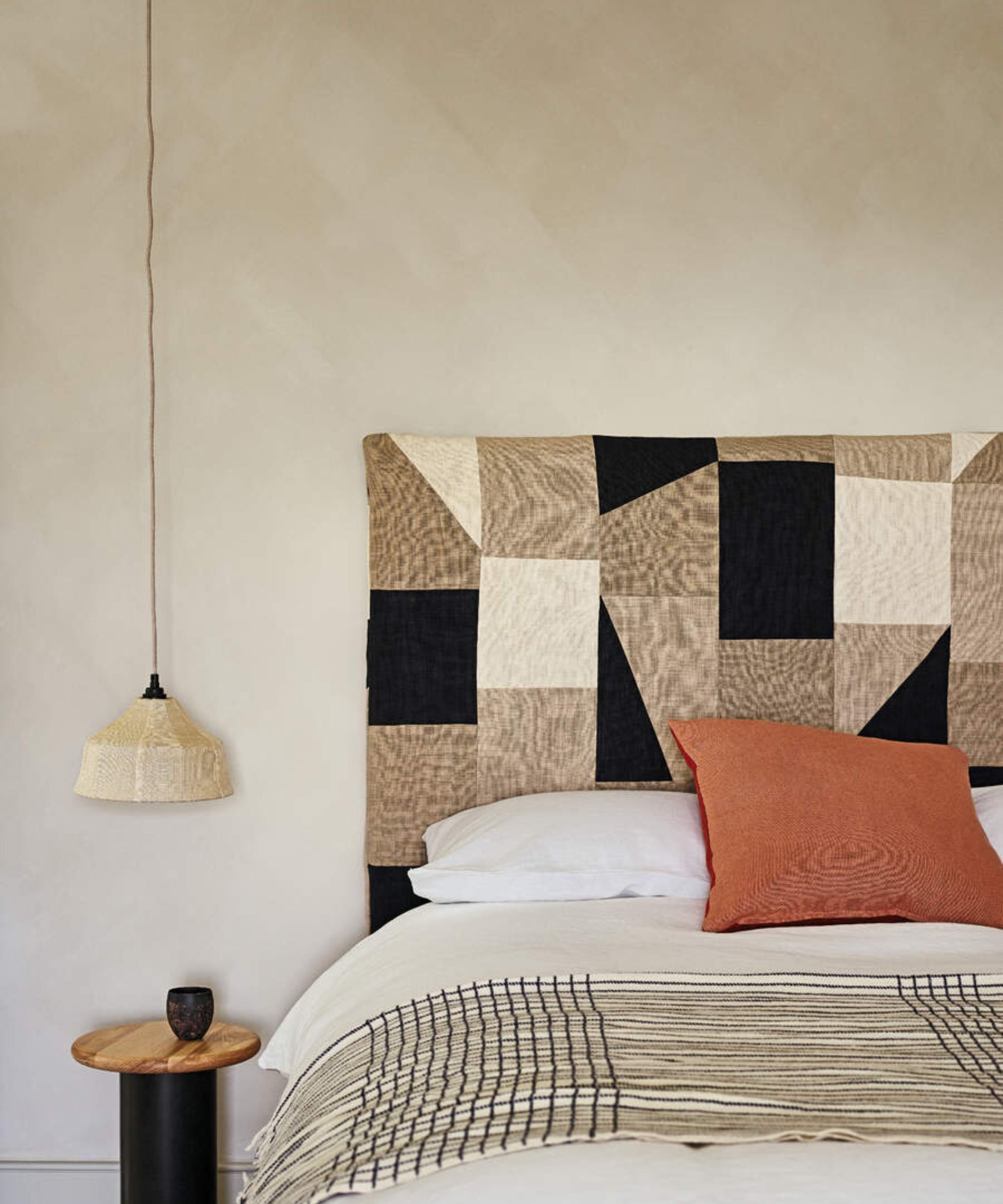
Another key part of maintaining your sleep space is the ability to vacuum around and under your bed with ease. If you cannot reach under the bed where dust may gather, especially if you are one for clever under-bed storage solutions, you might want a lower bed setup where less dust will accumulate.
'Sleep is directly affected by allergies,' Dr. Swain reminds us. 'If a person is having more trouble breathing, it can force their body into a lighter stage of sleep. If the bed is higher, dust and loose socks can accumulate below the bed. It can be challenging to vacuum under the bed with a traditional vacuum (though small robot vacuums can be helpful in this area). If the bed is low to the ground and does not have space underneath it, that can mitigate this issue.'
5. Climate and bedroom environment
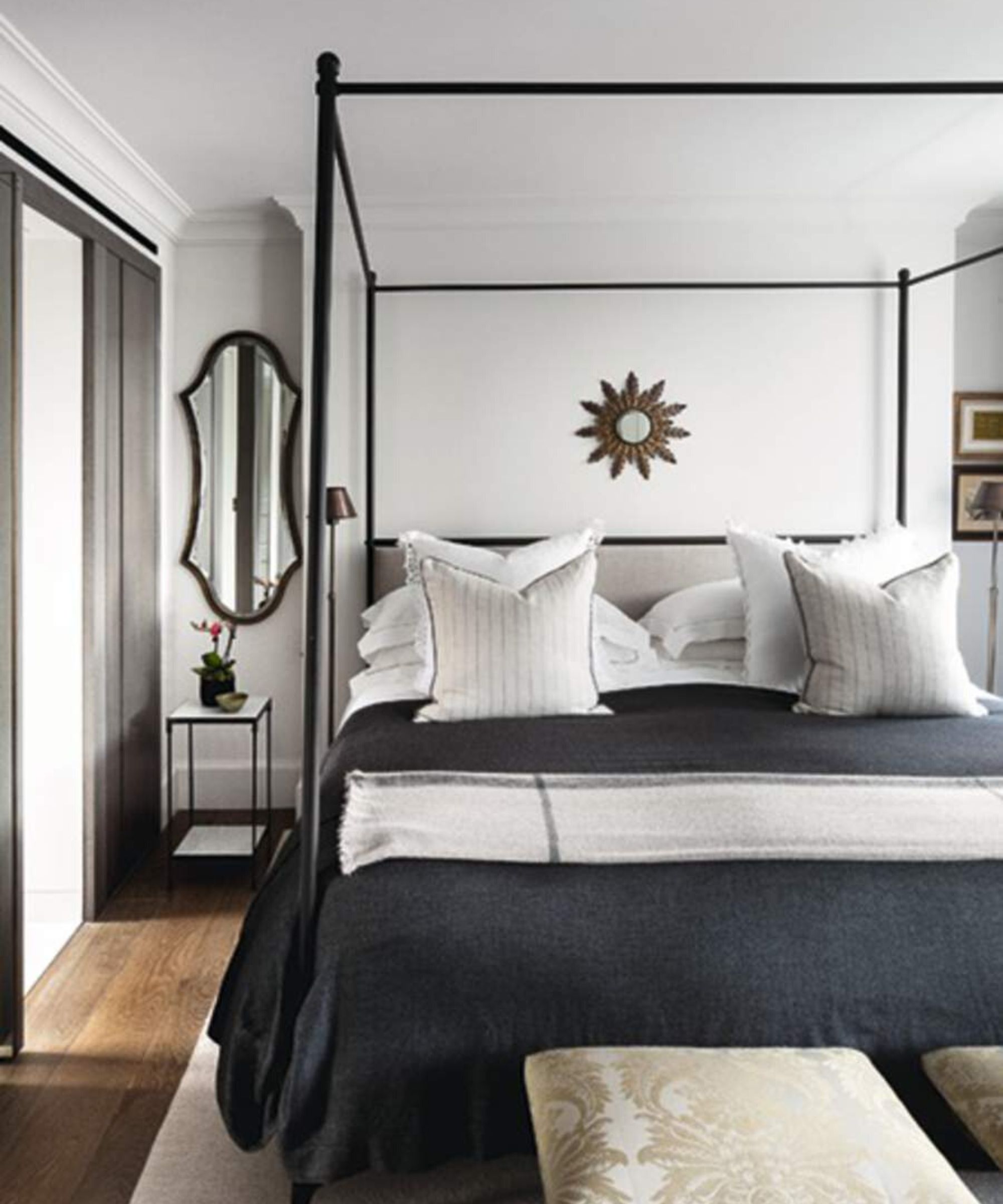
Finally, how high or low you sleep to the ground might also depend on your room's natural size and contours and environmental factors like how warm it tends to be. 'Keeping the mattress closer to the floor in warm climates will help keep the sleeper cooler,' adds Dr. Oexman.
Furthermore, if you prefer a Feng Shui bedroom layout, you may need to adjust the bed height so that you can encourage the right flow of energy. This might look like sleeping higher off the ground so you can see the door or not see a mirror. It could mean removing the space underneath to reduce the likelihood of clutter – so long as this adheres to your comfort and bedroom storage needs.
'The height of a bed should be adjusted to each person’s comfort level,' Feng Shui expert Kerstin Tracy shares. This will, first and foremost, depend on the individual's height, weight, physical abilities, and any limitations we have touched on.
Bad bedroom Feng Shui can make you feel drained. 'A bedroom is for rest and romance,' continues Kerstin. 'We like it to be open, calm, clean, and quiet with a touch of passion. Space underneath the bed is just as important as space around it. Any clutter, work-related items, electronics, or exercise equipment can create stress and most likely lead to sleep issues. Let the energy gently flow at night.'
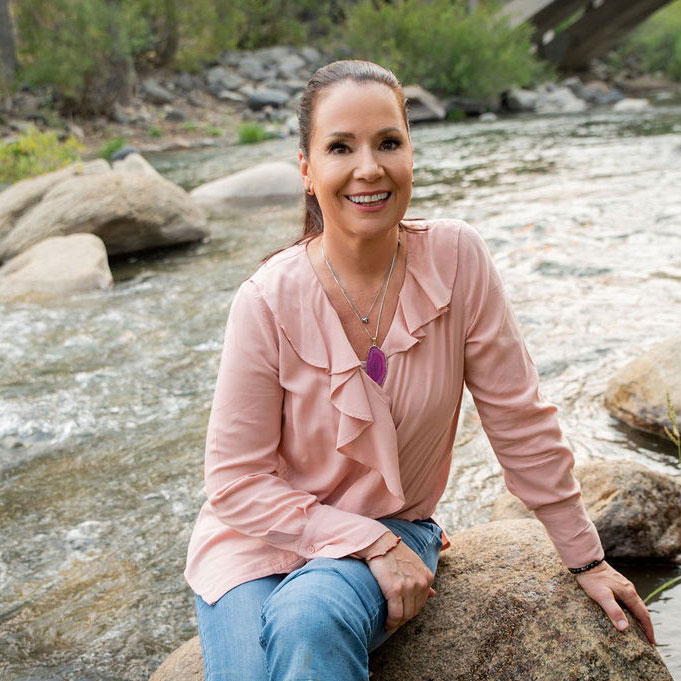
Certified Diamond Feng Shui Expert and a Red Ribbon Professional Consultant with the International Feng Shui Guild, Kerstin Tracy works with Feng Shui clients both locally and worldwide. Kerstin is passionate about helping clients create harmony within and around themselves by making changes to their space.
FAQs
What is the best bed height for children?
You should consider age and maturity and understand your child's sleeping patterns when making this decision. 'For children, it is best to start their bed on the floor until you know if they sleepwalk,' says Dr. Oexman.
'When children move from cribs to their first bed, the new bed should be close to the floor. Make sure that the area surrounding the bed is free from anything that may harm them if they roll out of the bed or get out of it in the dark (toys, nightstands). It is normal for kids to occasionally move at night and sometimes make the track to their parents’ bedroom,'
How can I add height to my bed?
If you have realized on reading this that you might benefit from a bed with more height, you have some options. 'Box springs add support to the mattress compared to bed slats. They also add height to the bed,' says Dr.Swain. Wayfair has a generous offering of bed foundations and box springs.
If the kids are asking for a lot of height out of fun and preference, perhaps they spotted a cool bunkbed at the latest sleepover; be sure this is a safe option for them. 'Make sure that children who sleep in bunk beds are not sleepwalkers or move a great deal at night,' adds Dr. Oexman.
Finding the right bed height should bring a better sense of comfort to your bedroom, but if you are experiencing sleeping troubles or any of the issues mentioned in this article, consult your doctor or medical expert before making any significant lifestyle changes.
Sign up to the Homes & Gardens newsletter
Design expertise in your inbox – from inspiring decorating ideas and beautiful celebrity homes to practical gardening advice and shopping round-ups.

Camille is the former deputy editor of Real Homes where she covered a broad range of topics, including house tours, small space design, and gardens. She studied English language and Italian at the University of Manchester and during a year abroad studying linguistics and history of art in Bologna, Italy she started documenting her adventures and observations in a blog. Camille is always creating and spends her downtime painting, taking photos, traveling, and writing short stories.
-
 How to grow crepe myrtle in pots – and transform even the smallest of yards with dazzling flowers this summer
How to grow crepe myrtle in pots – and transform even the smallest of yards with dazzling flowers this summerGrowing crepe myrtles in pots will inject splashes of brilliant color into your outside space
By Thomas Rutter Published
-
 I've spent over 200 hours testing vacuums and swear by my two Dysons – this is how I properly clean a Dyson vacuum filter for longer-lasting appliances
I've spent over 200 hours testing vacuums and swear by my two Dysons – this is how I properly clean a Dyson vacuum filter for longer-lasting appliancesYour Dyson vacuum will last much longer and clean at its best
By Dan Fauzi Published